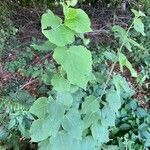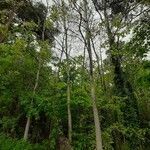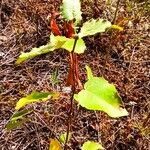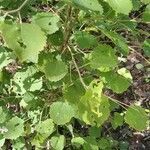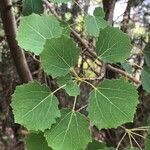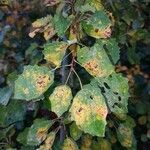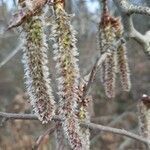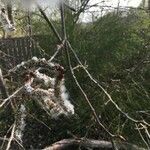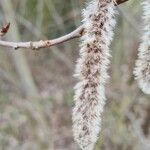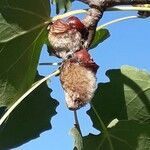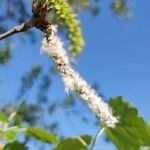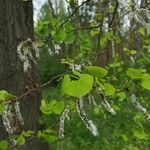Trees to 20 m tall; bark grayish green, smooth, irregularly fissured or scabrous at base of trunk; crown globose, open. Branchlets grayish brown, terete; 1-year-old branchlets reddish brown, shiny, glabrous or pubescent. Buds ovoid-globose. Petiole compressed, ca. as long as leaf blade; leaf blade suborbicular, 3-7 cm, both surfaces glabrous, or pilose at first, base truncate, rounded, or shallowly cordate, margin with remotely sinuous teeth or crenate, apex obtuse-rounded, rarely apiculate. Sprouts with leaf blade larger, deltoid-ovate-orbicular, base cordate or truncate, margin crenate-serrate. Male catkin 5-8 cm; rachis pubescent. Male flower: stamens 5-10 or more. Female catkin 4-6 cm, to 10 cm in fruit. Capsule narrowly conical, glabrous, 2-valved, subsessile. Fl. Apr, fr. May. 2n = 38.
A small tree. It grows 15 m high and spreads 10 m wide. The bark is dark grey and cracked. The leaves are grey-green. They tremble in the breeze. They are finely hairy and whiter underneath. The leaves turn yellow and orange in autumn.
